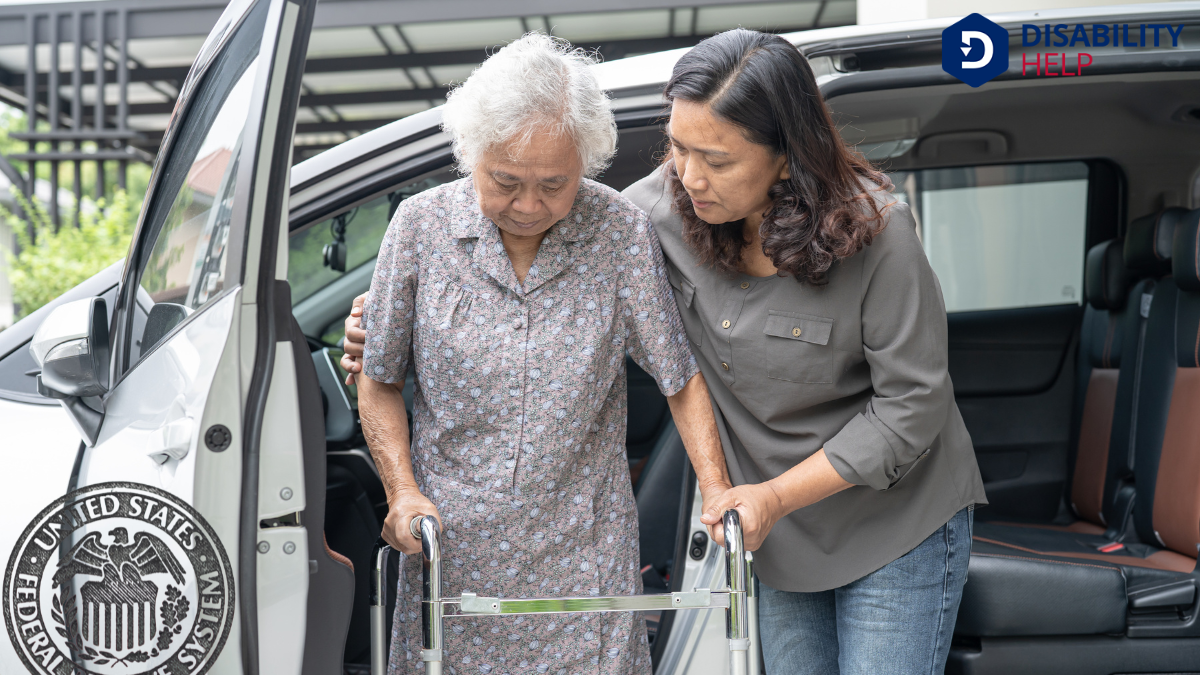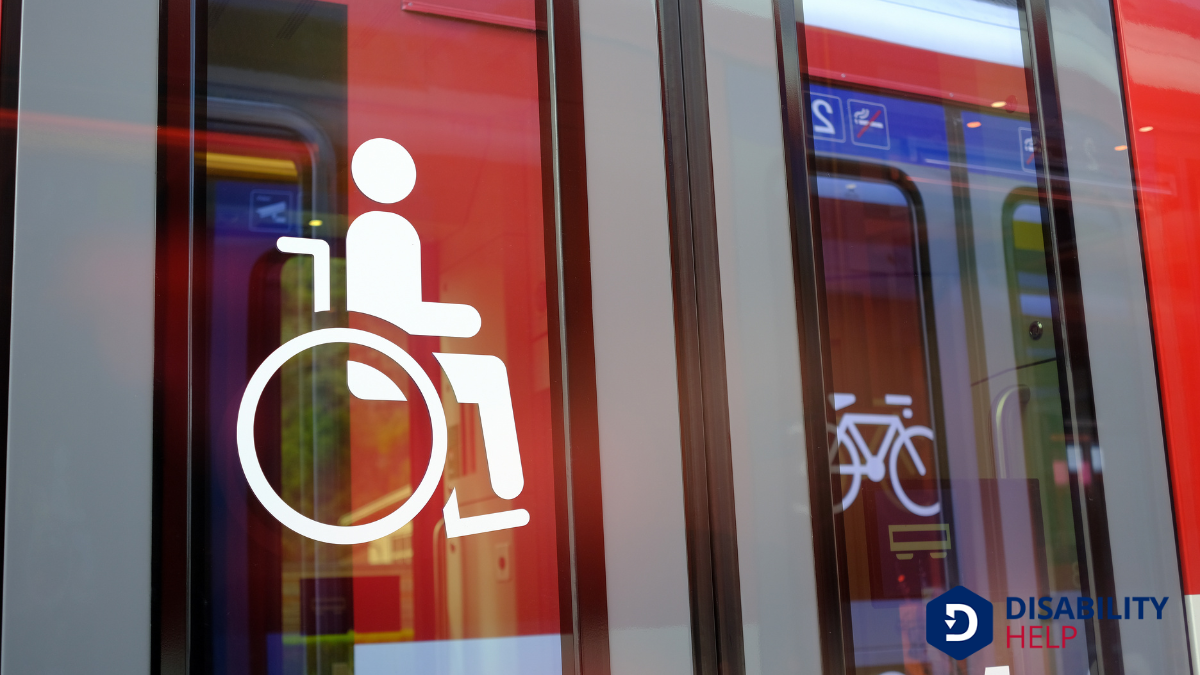When considering whether Social Security covers transportation benefits, it's important to understand that it primarily provides financial assistance rather than direct services like transportation. While Social Security doesn't directly fund transportation, programs like MedicaidA U.S. government program that provides health coverage to eligible low-income individuals, includin... and community initiatives often step in to fill this gap. Let's explore how these resources work alongside Social Security to guarantee individuals can access the transportation they need to maintain their independence and well-being.
Key Takeaways
- Social Security does not directly provide transportation benefits to recipients.
- Financial assistance from Social Security can indirectly support transportation needs.
- Federal programs improve transportation for seniors and individuals with disabilities.
- Community initiatives offer transportation solutions for those on Social Security.
- Public and nonprofit services address transportation access for Social Security beneficiaries.
Understanding Social Security Benefits
Understanding Social Security benefits is essential for planning our financial future. We need to recognize that these benefits aren't just for retirees. Social Security offers financial support to various groups, including disabled individuals and survivors of deceased workers.
By grasping the fundamentals, we can better navigate our options and maximize what we're entitled to receive.
Let's focus on understanding our earning records and how our work history affects our benefits. Knowing how Social Security calculates these benefits helps us make informed decisions about when to claim them.
We should also be aware of how our benefits could be impacted by continuing to work after retirement age. This knowledge empowers us to create a more secure financial plan that suits our unique needs and goals.
Types of Social Security Assistance

While many of us think of Social Security primarily as a retirement program, it actually encompasses a diverse array of assistance types that cater to different needs.
We can access benefits such as disability insuranceA form of insurance that provides income to individuals who are unable to work due to a disability., which supports those unable to work due to health issues. Survivors' benefits help families when a loved one passes, providing financial relief during tough times.
For those with limited resources, Supplemental Security Income (SSI) offers support to meet essential needs. These programs are designed to guarantee that people facing various life challenges have a safety net.
It's important to understand that while transportation isn't a direct benefit of Social Security, these financial supports can indirectly assist in covering transportation-related expenses for beneficiaries.
Transportation Needs of Social Security Recipients
As we consider the transportation needs of Social Security recipients, it's essential to address how accessible public transportation is for them.
We should also evaluate the availability of paratransit servicesTransportation services designed to accommodate individuals with disabilities who cannot use regular... that cater to those with mobility challenges.
Additionally, exploring ride-sharing options can offer further flexibility and convenience for their daily travel.
Public Transportation Accessibility
For many Social Security recipients, especially those without personal vehicles, public transportation is an essential resource that guarantees access to important services and activities.
We rely on buses, trains, and subways to reach medical appointments, grocery stores, and community centers. However, not all of us find public transportation easily accessible.
Challenges like route availability, service frequency, and proximity to stops can greatly impact our ability to use these services effectively. Some areas offer discounted transit fares for seniors and individuals with disabilities, making it more affordable.
But despite these benefits, the infrastructure isn't always accommodating. Steps, narrow aisles, and limited seating can pose difficulties.
We must advocate for improvements in public transportation systems so they truly meet our needs.
Paratransit Services Availability
Even though public transportation plays an essential role for many of us, it's not always a viable option for everyone. Some Social Security recipients need specialized options like paratransit services.
These services are vital for individuals who can't use regular public transit due to disabilities or mobility challenges. Paratransit provides door-to-door or curb-to-curb transportation, ensuring accessibilityThe design of products, devices, services, or environments to be usable by people with disabilities.... and independence for those of us who need it most.
We understand that availability can vary considerably based on location. Urban areas might offer more extensive paratransit options, while rural areas often face limitations.
It's essential for us to recognize these disparities and advocate for improved services. By staying informed and voicing our needs, we can help shape a more inclusive transportation system for all.
Ride-Sharing Options Considered
Recognizing the limitations of paratransit services, we must explore other viable transportation solutions for Social Security recipients. Ride-sharing services like Uber and Lyft present an adaptable option. These services offer flexibility and convenience, which is essential for those with varying schedules and mobility needs. They allow us to book rides on-demand, providing a level of independence that traditional services might lack.
However, cost remains a concern. Social Security recipients often have fixed incomes, making it important to find affordable options. Some ride-sharing companies offer discounts for seniors or partner with organizations to subsidize costs.
We should consider advocating for expanded partnerships between ride-sharing companies and government programs to guarantee that transportation remains accessible and affordable for all who need it.
Examining Social Security's Coverage
When we explore Social Security's coverage, it's clear that understanding its scope is essential for grasping its impact on our lives.
Social Security was primarily designed to support us financially through retirement, disability, and survivor benefits. These benefits provide a safety net, ensuring a baseline of financial security.
However, direct transportation benefits aren't included in its provisions. Our focus should be on how these funds can indirectly support transportation needs.
For instance, the financial assistance we receive might be used to cover transportation costs like bus fares, taxi services, or other personal travel expenses.
It's important to recognize that while Social Security plays a significant role in our financial well-being, it doesn't specifically allocate resources for transportation-related needs.
Federal Programs Offering Transportation Support

While Social Security provides the foundation for our financial security, we also need to contemplate how federal programs specifically address transportation support.
The Department of Transportation offers initiatives like the Federal Transit Administration (FTA), which funds public transit systems, making them accessible to seniors and people with disabilities. Programs such as the Enhanced Mobility of Seniors and Individuals with Disabilities improve transit options where traditional services fall short.
The Veterans Health Administration provides transportation services for eligible veterans, ensuring access to medical facilities.
Medicaid also offers non-emergency medical transportation for beneficiaries, ensuring they reach healthcare appointments.
State and Local Transportation Assistance Options
As we explore transportation assistanceServices that provide accessible transportation for individuals with disabilities, helping them acce... at the state and local levels, it's clear that these options play a crucial role in our mobility. Many of us rely on these programs to maintain independence and connect with our communities.
State and local governments often offer targeted services that address specific needs. Let's consider their emotional impact:
- Freedom: Access to transportation means we can visit loved ones and participate in community events.
- Security: Reliable transit options guarantee we can reach essential services like medical appointments safely.
- Dignity: Affordable transportation helps us maintain our independence and self-respect without financial stress.
Understanding these options helps us fully appreciate the significance of state and local efforts in enhancing our daily lives. They bring us closer to the people and places we cherish.
Nonprofit and Community Resources for Transportation
Let's explore how nonprofit and community resources enhance our transportation options.
We can benefit from local volunteer driver programs, which offer personalized assistance, and community bus services that provide accessible travel routes.
Additionally, nonprofit ride-share initiatives help us connect with affordable and reliable transportation solutions.
Local Volunteer Driver Programs
Local volunteer driver programs offer invaluable support for those who need assistance with transportation.
These programs often partner with local nonprofits to connect volunteers with individuals who struggle to access essential services.
Let's imagine the impact these programs have on our community members:
- A grandmother who can now visit her doctor regularly without worrying about finding a ride.
- A veteran who finally gets to attend social gatherings, reducing isolation and loneliness.
- A single parent who can access job training to create a better future for their family.
Community Bus Services Availability
Community bus services play an essential role in guaranteeing everyone has access to transportation, especially those who may not have other means.
Often run by local governments or nonprofit organizations, these services provide a lifeline to individuals who need to get to medical appointments, grocery stores, or community centers. As we understand, not everyone can drive or afford private transportation, and community buses help bridge that gap.
Many of these services offer affordable or even free rides, making them accessible to those on fixed incomes.
By checking local resources, we can find schedules and routes that fit our needs. Let's remember to share this information with neighbors who might benefit.
Community buses guarantee we all stay connected and independent in our daily lives.
Nonprofit Ride-Share Initiatives
While traditional transportation services are crucial, nonprofit ride-share initiatives provide a dynamic alternative for those seeking flexibility and convenience.
These community-driven solutions offer more than just a ride; they create connections and foster independence for those in need. By embracing these services, we support a system that values our dignity and autonomy.
Consider the benefits:
- EmpowermentThe process of gaining control, authority, and power over one’s life, often used in the context of...: We gain control over our schedules, no longer bound by rigid bus timetables.
- Community: We connect with compassionate volunteers, transforming mere rides into opportunities for genuine interaction.
- Accessibility: We guarantee that even those in remote areas can access essential services, bridging gaps left by traditional transportation.
Tips for Accessing Transportation Services

Maneuvering the world of transportation services can be overwhelming, but with the right tips, we can make it easier to access the help we need.
First, let's start by identifying local resources. Many communities offer transportation assistance programs, so checking with your local senior center or community service organizations is a good start.
Next, explore eligibility requirements. Whether it's a government program or a nonprofit initiative, knowing what's required can save time.
Also, always have necessary documentation, like identification or proof of income, ready to go. Don't hesitate to reach out to customer service for clarification on applications or services.
Finally, let's leverage technology by using apps or online platforms that help us find and schedule rides efficiently.
Future Considerations for Transportation Benefits
As we look ahead to the future of transportation benefits, it's crucial to reflect on how evolving technology and policy changes might impact access and availability.
We must consider how these factors will shape our ability to support those who depend on transportation services.
Imagine a world where:
- Innovative Solutions: Self-driving vehicles and ride-sharing apps make transportation more accessible and affordable for all.
- Equitable Policies: Government initiatives prioritize funding for transportation options that serve the elderly and disabled, guaranteeing no one is left behind.
- Environmental Responsibility: Sustainable transportation methods become the norm, reducing our carbon footprint while enhancing mobility.
We understand the significance of these possibilities and the need to advocate for improvements that benefit everyone.
Let's guarantee transportation remains a right, not a privilege.
Conclusion
In exploring how Social Security intersects with transportation, we've seen it doesn't directly cover these needs. However, federal programs like Medicaid, alongside state, local, and nonprofit initiatives, play significant roles in bridging this gap. It's vital for us to stay informed about these resources to guarantee we or our loved ones can access essential services. As we look ahead, let's advocate for expanded transportation options to improve mobility and maintain community connections for everyone.






